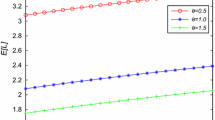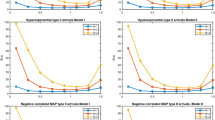Abstract
The present paper investigates the two-class priority M/M/1 queueing system, where the prioritized first class customers are served under first-come , first served (FCFS) preemptive resume discipline and have finite room capacity. The second class customers have infinite waiting space and low priority i.e. during the service of a low priority customer, if a high priority customer joins the system, then the low priority customer’s service is interrupted and will be resumed again when there is no high priority customer present in the system. Our aim is to get explicit expressions for the generating functions of the steady state probabilities in terms of Chebyshev’s polynomial of second kind have obtained. A recursive method is employed to solve the steady-state equations governing the model. Moreover, the expressions for the mean queue length, the marginal distributions of high and low priority customers are also given. The derivation is based only on the general structure of the system and the generating function involved, and thus is simpler than previous methods. We examine the effect of number of high priority customers, input and output rates on the average queue lengths of low and high priority classes by looking at a numerical illustration.
Similar content being viewed by others
References
Q Gong and R. Batta. A queue -length cut-off model for a preemptive two-priority M/M/1 system (2007) (submitted to SIAM Journal of Applied Mathematics)
S. Drekic and G D. Woolford, A preemptive priority queue with balking, Eur. J. Oper. Res., Vol. 164, 387–401 (2005).
G. Bitran and R. Caldentey, Two -class priority system with state-dependent arrivals, Queueing systems, Vol. 40, 4 (2002).
R. Groenevelt, G. Koole and Ph. Nain. On the basis of a two- class preemptive priority queue. Mathematical methods of Operations Research 55, 107–120 (2002).
A. M. K. Tarabia, Transient analysis of a non-empty M/M/1/N queue –an alternative approach, Opsearch, Vol. 38, No.4, 431–439 (2001).
H. S. Wilf, Generating functionology, Academic Press, Inc., New York (1994).
T. Nishida, Approximate analysis for heterogeneous multiserver systems with priority jobs, Perf. Eval., 15, 77–88 (1992).
S. S. Franti, Analysis of a dynamic priority queue, Commn. Stat. Stoch. Mod., 6, 3, 415–444 (1990).
C. Schaak and R. C. Larson, An N-server cut off priority queue, Oper. Res., 34, 257–266 (1986).
S. S. Franti, Algorithms for a dynamic priority queue with two types of customers, Ph.D. Thesis, Drexel Univ. Philadelphia (1985).
H. M. Srivastava and B. R. K. Kashyap, Special functions in queueing theory and related stochastic processes, Academic Press, New York (1982)
M. F. Neuts, Matrix- geometric solutions in stochastic models, The Johs Hopkins University Pess, Baltimore (1981).
R. D. Miller, Computation of steady – state probabilities for M/M/1 priority queues, Oper. Res., 29, 945–958 (1981).
M. Abramowitz, and I. A. Stegun, Handbook of Mathematical Functions, New York, Dover (1970).
R. G. Miller, Priority queues, Ann. Math. Statist. 31, 86–103 (1960).
C. Heathcote, The time-dependent problem for a queue with preemptive priorities, Operations Research 7, 670–680 (1959).
F. F. Stephan, Two queues under preemptive priority with Poisson arrival and service rates, Oper. Res., 6, 399–418 (1958).
H. White, and L. Christie, Queueing with preemptive priorities or with breakdown, Oper. Res. 6, 79–96 (1958).
J. Y. Barry, A priority queueing problem, Oper. Res., 4, 385–386 (1956).
A. Cobham., Priority assignment in waiting line problem, J. Oper. Res. Soc. Am., 2, 70–76 (1954).
Author information
Authors and Affiliations
Corresponding author
Rights and permissions
About this article
Cite this article
Tarabia, A.M.K. Analysis of M/M/1 queueing system with two priority classes. OPSEARCH 44, 346–365 (2007). https://doi.org/10.1007/BF03398799
Received:
Published:
Issue Date:
DOI: https://doi.org/10.1007/BF03398799




